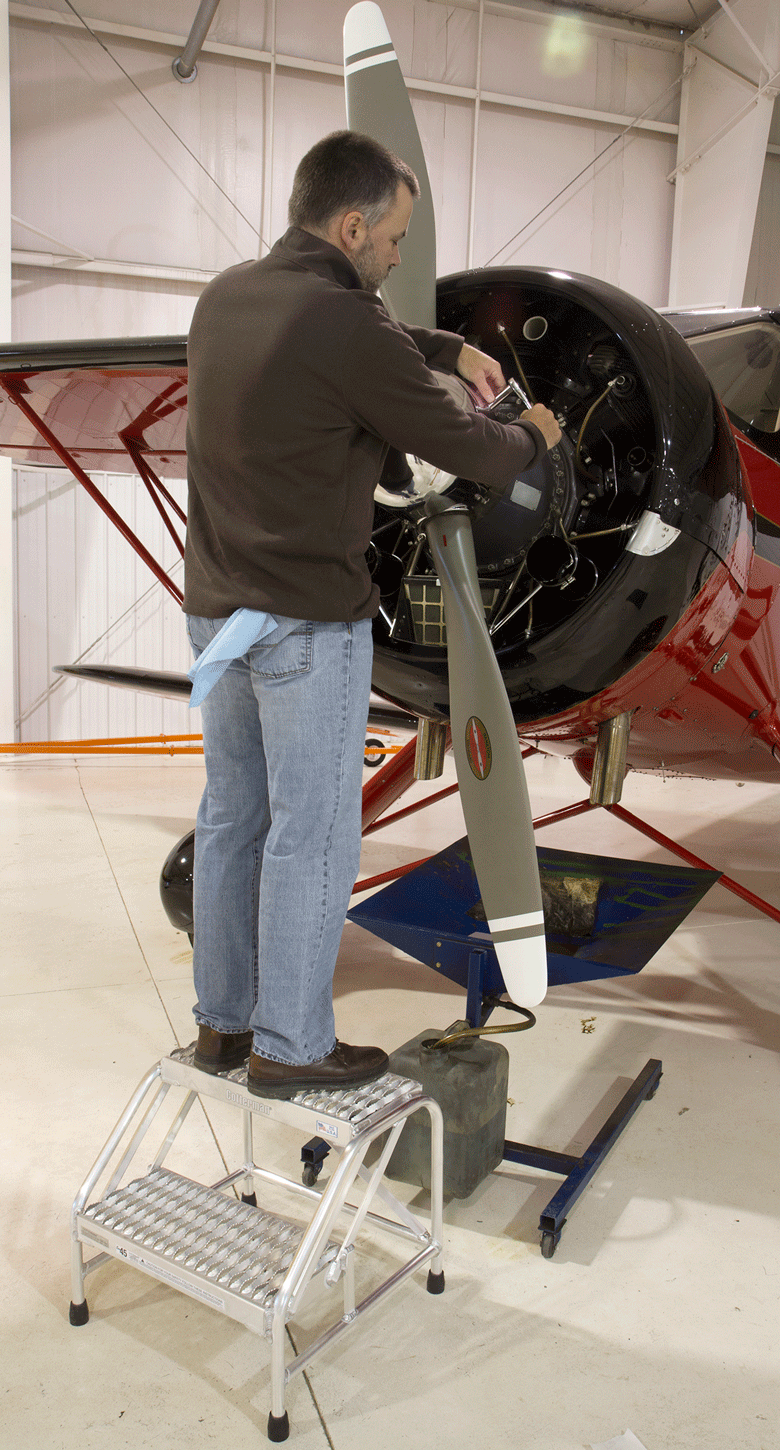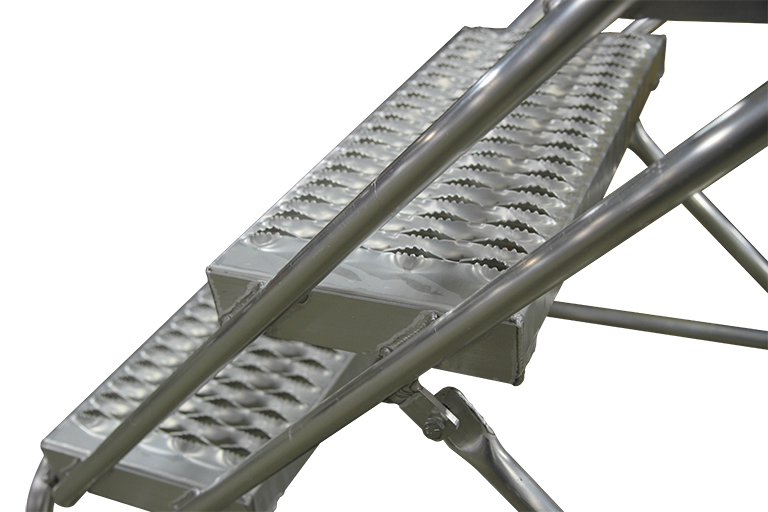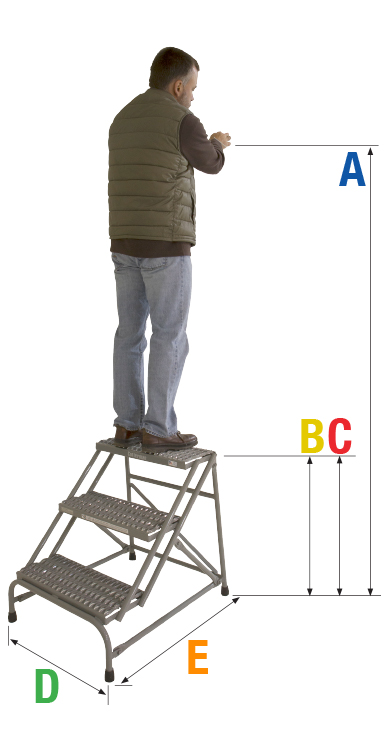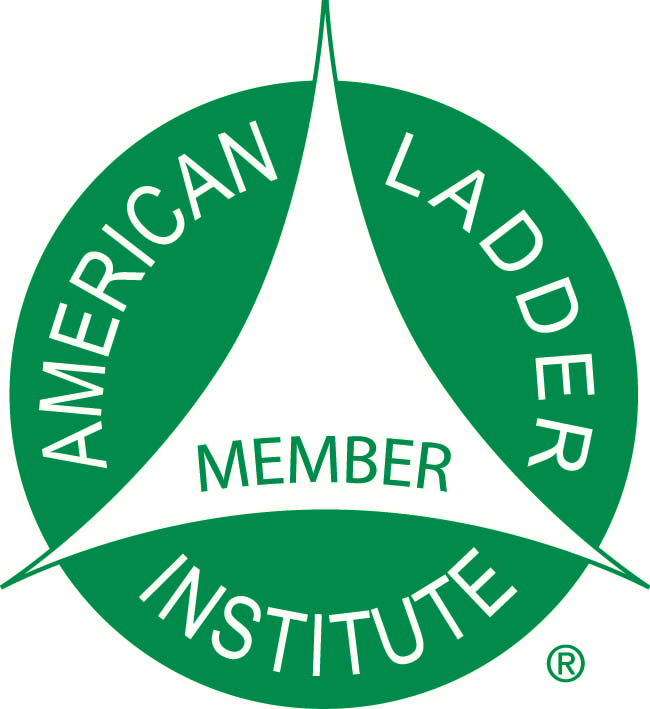
STEEL OR ALUMINUM
Convenient and heavy duty, STEP STANDS are equipped with non-slip serrated steps. Rubber tipped legs to hold the stand secure during use. A comfortable easy climbing angle of 45°. Steel stands have a gray powder-coat finish and lightweight aluminum stands have a mill finish. Choose from one, two and three step models.
500 lb. load rating.
- 45° climb angle.
- Serrated steps.
- 9.5″ deep steps.
- Without handrails.
- Step Stands & Stools meet applicable OSHA and ANSI standards.
Superior CONSTRUCTION

- All tube members are 1” steel or aluminum tube construction.
- All welded construction (most models).
- Gray Powder coat is the standard finish on steel Step Stands.
8 stairway tread support welds per step, for a stronger, longer lasting, and safer ladder.
TREAD
Cotterman® Heavy Duty Serrated tread is an aggressive non-slip surface and open step design that prevents debris buildup.

 (A3)
(A3)
Tread WIDTH
Cotterman® Step Stands & Stools come in a variety of tread widths, depending on model.

First Thing’s First
First, we need to determine what size Work Platform you need. One of the most common mistakes made in ordering many ladders is getting them too large for the available workspace. Here are some things to consider before ordering your new Work Platform:

A: Working Height
is the approximate height that you would like to be able to comfortably reach. It is usually calculated at 5.5′ above the ladder’s platform height.
B: Overall Height
is VERY important. You want to be sure that your ladder will not be too tall to fit into your workspace. This includes being able to fit through any doors that you may need to move it through, or under any ceilings or fixtures that you may have.
C: Top Step Height
is the measurement of the top step from the ground. It’s important that this measurement is not too far above or below your desired working height.
D: Base Width
is also very important because as ladders get taller, the base width increases. It is important to be sure that the ladder will not be too wide for your workspace. We offer different tread widths to accommodate most work areas.
E: Base Length
is the measurement of how long the base of the ladder runs. This is dependent upon the height of the ladder. The taller the ladder, the longer the base. Also lower climb angles increase base length.
Product Selection Guide
Our NEW Product Selection guide can assist you in choosing the correct ladder for your application. Once you find the ladder that has the correct dimensions for you, just select the red model number, we’ll then ask you to select your tread type, tread width and platform depth. After that we’ll show you the model number(s) that is the best fit for your use.
| Short Description | Platform Height | Overall Height | Working Height | Part Number |
| 2 Step Steel Step Stand | 20 | 20 | 86 | 1302N2626A3E10B1C1 |
| 2 Step Steel Step Stand with 2″ spring-loaded casters | 20 | 20 | 86 | 1302N2626A3E10B3C1 |
| 3 Step Steel Step Stand | 30 | 30 | 96 | 1403N2628A3E10B1C1 |
| 3 Step Steel Step Stand | 30 | 30 | 96 | 1403N3234A3E10B1C1 |
| 1 Step Aluminum Step Stand | 12 | 12 | 78 | 1801N3232A3E12B1C50 |
| 2 Step Aluminum Step Stand | 20 | 20 | 86 | 1802N2626A3E10B1C50 |
| 3 Step Aluminum Step Stand | 30 | 30 | 96 | 1803N3232A3E10B1C50 |
| 3 Step Aluminum Step Stand | 30 | 30 | 96 | 1903N2628A3E10B1C50 |
